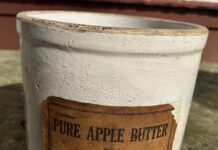I’m making ham for Easter dinner this year, and I’m relatively new to this whole cooking thing. Any tips on how I can do this safely?
Easter falls on April Fools’ Day this year. If you want to make sure you don’t prank your guests with a stomachache, there are some food safety rules you can follow to ensure a safe, delicious meal.
Because ham is one of the traditional meats served at Easter, let’s start there.
Ham, which is the leg of pork, can be fresh, cured, or cured-and-smoked. Fresh ham bears the label “fresh,” which is an indication that the product is not cured, according to the U.S. Department of Agriculture. Curing is the process of adding salt, sodium or potassium nitrate, nitrites, and sometimes sugar, seasonings, phosphates, and cure accelerators to pork for preservation, color development, and flavor enhancement.
It is important to know whether your ham is ready-to-eat or requires cooking. You can find this information clearly labeled on the package. While many hams purchased from the grocery store are cured and sold as fully cooked, make sure you check whether the ham you’ve chosen is fully cooked, or fresh and raw.
According to the U.S Department of Health and Human Services’ FoodSafety.gov, some hams have the appearance of ready-to-eat products, but they might, in fact, require cooking before eating. Those hams should be cooked to an internal temperature of 145 F and held before slicing or eating for a three-minute rest period.
Hams from federally inspected plants that are cooked can be eaten cold or can be warmed to an internal temperature of 140 F or more, according to FoodSafety.gov.
If you also plan to have Easter eggs at your celebration, keep the eggs refrigerated and discard any with cracks or that are visibly dirty. Salmonella can be found on both the outsides and insides of eggs. One way to reduce your risk of Salmonella exposure is to purchase in-shell, pasteurized eggs.
Hard-boil the eggs thoroughly until both the yolks and whites are firm. You can do that by placing the eggs in a saucepan covered with at least 1 inch of water. When the water is at a full boil, remove the pan from the heat and let the eggs sit in the water for 12–18 minutes, depending on the sizes of the eggs, advises Stop Foodborne Illness, a Chicago-based nonprofit public health organization. Then, run cold water over the eggs and store them in the refrigerator until you are ready to decorate them.
Here are some other safety tips concerning eggs:
- Use food coloring or food-grade dyes to color eggs if you plan to eat them.
- Boiled eggs can be safely kept out of the refrigerator for a maximum of two hours before they become hazardous to eat. If you’re hosting an egg hunt, that two-hour window includes the time it takes to both hide and find the eggs.
- Boiled eggs can be stored in the refrigerator for one week. After that, they are unsafe to eat.
Lastly, do not eat hard-boiled eggs used for an egg hunt or as decorations if they have been at a temperature above 40 degrees for more than two hours.
Chow Line is a service of the College of Food, Agricultural, and Environmental Sciences and its outreach and research arms, OSU Extension and the Ohio Agricultural Research and Development Center. Send questions to Chow Line, c/o Tracy Turner, 364 W. Lane Ave., Suite B120, Columbus, OH 43201, or turner.490@osu.edu.
Get more Great Recipes in your inbox each week by getting
Around the Table.
It's a FREE weekly e-newsletter all about food. Sign Up Today!
















